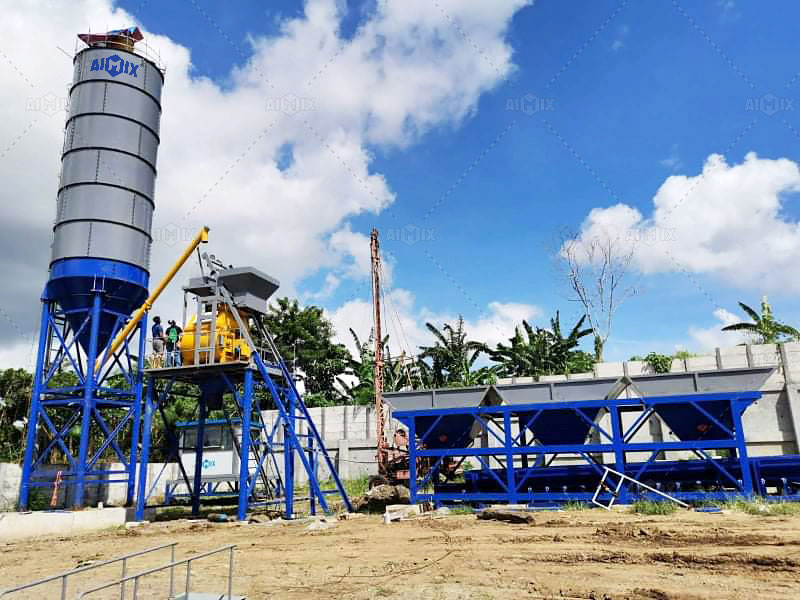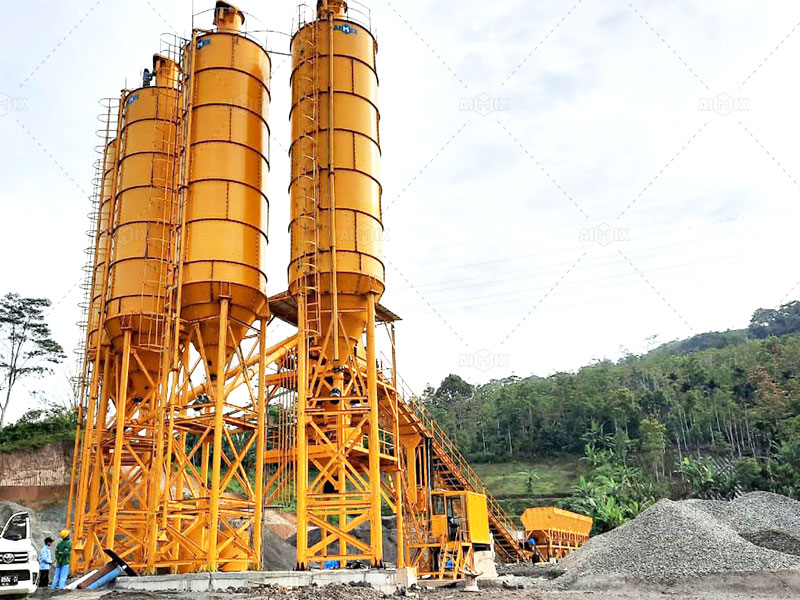Concrete batching plants are intricate systems designed to produce high-quality concrete for construction projects. A crucial element within these plants is the aggregate weighing system, responsible for accurately measuring and dispensing aggregates like sand, gravel, and crushed stone.
Components of the Aggregate Weighing System:
Weigh Hopper:
The weigh hopper is a key component of the aggregate weighing system in a batching plant malaysia. It is a container that holds a predetermined quantity of aggregates before weighing. The design and construction of the weigh hopper ensure that it can withstand the weight of the aggregates and provide a consistent environment for accurate weighing.

Load Cells:
Load cells are sensors integrated into the weigh hopper to measure the weight of the aggregates accurately. These sensors undergo deformation when weight is applied, and the resulting electrical signals are converted into weight readings. Load cells play a pivotal role in achieving precision in the weighing process.
Conveyor Belts or Bins:
Conveyor belts or bins transport aggregates from storage to the weigh hopper. The design and functionality of these conveyors in a stationary concrete batching plant are critical to maintaining a steady flow of aggregates to ensure accurate weighing. Bins or storage compartments may also be used, allowing for the accumulation of aggregates before discharge into the weigh hopper.
Gates or Valves:
Gates or valves control the discharge of aggregates into the weigh hopper. These components are strategically positioned to regulate the flow and quantity of aggregates, ensuring that the correct amount is fed into the weigh hopper for weighing. Precise control of gates or valves is essential for accuracy in the weighing process.
Working Mechanism:
Loading Aggregates:
The process begins with the loading of aggregates into the storage bins or onto the conveyor belts. Aggregates are typically stored in designated bins according to their sizes (fine, coarse, etc.). As the need for a specific mix arises, the corresponding aggregates are conveyed to the weigh hopper.

Weighing Process:
When the aggregates enter the weigh hopper, the load cells detect the weight of the material. The load cells convert the applied force into electrical signals, which are then processed by the batching plant’s control system. The system continuously monitors the weight until the desired quantity of aggregates is achieved.
Control System Operation:
The control system of the small batching plant plays a crucial role in the aggregate weighing process. It receives signals from the load cells, processes the data, and controls the opening and closing of gates or valves to regulate the flow of aggregates. The system compares the measured weight with the predetermined target weight for accuracy.
Accuracy and Calibration:
Achieving accurate aggregate weighing requires precise calibration of the system. Calibration involves adjusting the load cells and the control system to ensure that the measured weights align with the actual weights of the aggregates. Regular calibration is essential to account for any changes in environmental conditions or equipment performance.
Importance of Precision in Aggregate Weighing:
Concrete Mix Consistency:
Precision in aggregate weighing directly influences the consistency of the concrete mix. Accurate measurement ensures that the correct proportions of aggregates are included in the mix, leading to uniformity in the composition of the concrete.
Strength and Durability:
The strength and durability of concrete are closely tied to the accurate weighing of aggregates. Deviations from specified mix proportions can compromise the structural integrity and performance of the concrete. Precise weighing contributes to the achievement of desired concrete properties.
Cost Efficiency:
Accurate aggregate weighing contributes to cost efficiency in concrete production. By avoiding overuse or underuse of aggregates, the batching plant optimizes material usage, reducing waste and associated costs. This efficiency is particularly crucial in large-scale construction projects where material costs can be significant.
Compliance with Specifications:
Many construction projects have specific concrete mix specifications that must be adhered to. The aggregate weighing system plays a vital role in meeting these specifications, ensuring that the produced concrete meets the required standards for strength, workability, and other properties.
Conclusion:
The aggregate weighing system is a critical component of ready mix concrete batching plants, influencing the quality, strength, and efficiency of the produced concrete. Understanding the components and working mechanisms of this system is essential for operators and those involved in the concrete production process. Precision in aggregate weighing is not just a technical requirement but a fundamental aspect of delivering high-quality concrete that meets the stringent demands of modern construction projects.
